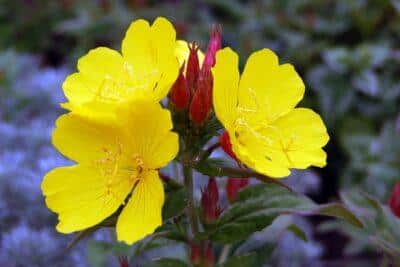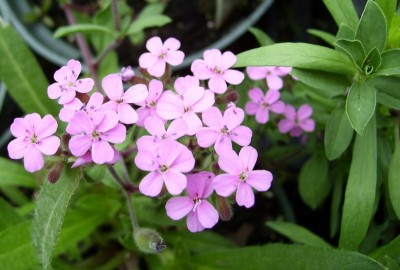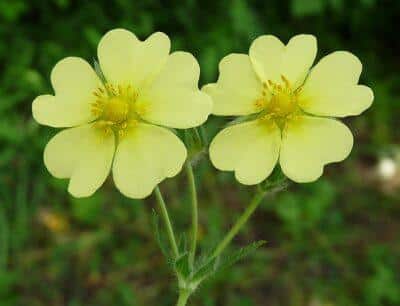
Evening Primrose
If you take a stroll through local woods and fields right now you will be privileged to enjoy a wide array of useful herbs and flowers. Some are beautiful and have old stories associated with them. Others can be used as food and medicine. They all contribute to the magnificence which is spring.
Here are five herbs you may have never used should considering utilizing this spring:
1. Evening Primrose Oil Heals and Prevents Illnesses
Along roadsides and in fields, you may see the bright yellow flowers of evening primrose. The seeds can be made into antioxidant rich evening oil. The oil is rich in GLA, a compound which relieves inflammation and promotes longevity. Evening primrose oil is used internally for the prevention and treatment of arthritis, cardiovascular disease and a wide array of other conditions that cause inflammation. Add five or 10 drops of organic lavender essential oil to a tablespoonful of evening primrose oil and apply it to lesions if you have psoriasis. It will soothe, relieve itchiness and prevent your skin from cracking. The plaques will heal if you apply the oil two or more times daily to affected areas.
2. Wash Fine Fabrics with Soapwort

Soapwort
Great stands of soapwort, also known as bouncing bet, can be found in wet areas along streams in May. Soapwort’s lovely pink, white and purple flowers have a light scent. If you are finishing up spring cleaning and have some delicate fabrics which need to be cleaned, reach for soapwort.
The Hidden Secrets Of Making Herbal Medicines…Right At Your Fingertips!
Gather some roots and clean them well. Chop the roots up and place them in an old stocking or sock. Place the sock which contains the roots in a pan. Run water into the pan. Shake the sock around. The soapwort will make a fine lather which effectively cleans fine fabric. Rinse the fabric after washing it. Let it dry. Soapwort is so gentle and effective that it is used to clean museum-quality linens.
3. Ancient and Current Uses of Red Clover
Red clover is one of my favorite herbs. Gather the flowers now for drying. I like the slightly sweet, fresh taste of the blossoms. Red clover tea is an excellent beverage to drink before bed. The fresh flowers can be added to salads for a tasty, unexpected treat. Gathering red clover blossoms is an excellent way to introduce children to wild herb harvesting. Red clover benefits the skin, liver and nervous system. It contains phytoestrogens, which can help to prevent breast and other cancers. Phytoestrogens help to soothe menopausal symptoms.
In addition to being edible and medicinal, red clover is graced with a rich history. In Ireland, the leaf of a four-leafed red clover was said to bring good luck. St. Patrick is said to have used the three-leaved clover to describe the Trinity to new Christian converts. Years ago, people believed that if you dreamed of clover fields, you would have health, prosperity and happiness.
Dried red clover blossoms can be made into dream pillows. Try combining red clover with dried hops and mugwort. Add a little bit of chamomile or lavender for fragrance. All of these herbs are relaxing and promote a deep, dream-filled sleep. If you have children who are learning to sew, making dream pillows is a simple project.
New “Survival Herb Bank” Gives You Access to God’s Amazing Medicine Chest
The children can cut cloth into two identically sized squares or circles. They should measure about six to eight inches across. The children simply sew the cloth and make a pillowcase. They can then fill the pillows with dried herbs. The pillows should not be overstuffed. They should be fairly flat. After the herbs are added, have the children finish stitching the pillows so that the herbs will be contained. At bedtime, tuck the herbal pillow into the pillowcase of a bed pillow and wish the children sweet dreams.
4. Use Cinquefoil for First Aid

Cinquefoil
Cinquefoil is a rough-textured, hairy plant that has small yellow flowers. It is often found along roadsides and in fields. If you are gathering cinquefoil or other herbs, don’t gather them from the side of the road as they are likely to be contaminated. Cinquefoil is a member of the rose family. The entire plant is useful. Make a poultice of cinquefoil if you get a cut, scratch or scrape. The herb has astringent properties which stop bleeding and relieve inflammation. You can make a cinquefoil tea to relieve stomach irritation and ulcers.
5. Blue Vervain Soothes Headaches
Blue vervain is one of my favorite remedies for relieving stress headaches. White vervain works, too. The blue-colored variety is more common. It can be prepared as a tincture, infusion or syrup. Use vervain fresh or dried. Do not combine it with herbs that contain tannins, such as black tea or white oak bark, or a dark sediment will form. Vervain was considered sacred by Druids. They viewed it as a precious gift from the earth.
Enjoying May Herbs
Simply taking a walk in a plant-rich spring field or down a dirt road is healing in of itself. As you come to know the plants that brighten your path, you will enjoy each step even more. Be sure to tread lightly and only harvest from clean, large stands of plants.
What herbs would you add to this list? Share your suggestions in the section below:
Harness The Power Of Nature’s Most Remarkable Healer: Vinegar. Read More Here.
 Off The Grid News Better Ideas For Off The Grid Living
Off The Grid News Better Ideas For Off The Grid Living



